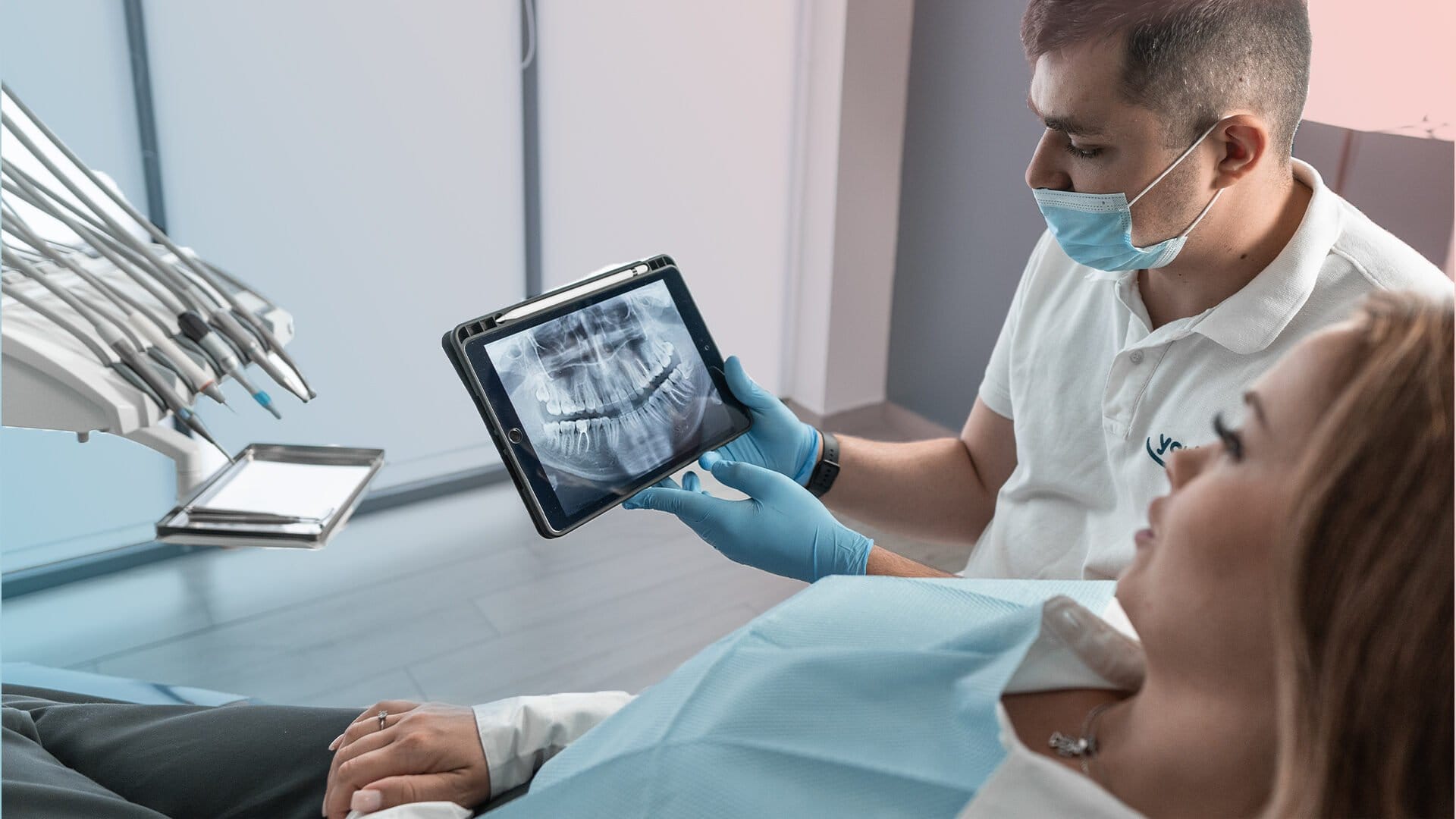Menu
Free Consultation

Dental health is an important part of our general health. Decay, fractures or abrasions that occur in teeth in daily life can create both aesthetic and functional problems. Restorative dental treatment is a treatment area that aims to restore the natural appearance and aesthetic appearance of damaged teeth by repairing them. Today, the natural structure of the teeth can be preserved thanks to advanced filling materials, coatings, prostheses and implants. In this article, the details of restorative dental treatment, which methods are distributed and distributed are obtained.
Restorative dentistry is a branch of dentistry that is used to repair various damages to teeth and restore their natural functions. It includes treatment methods that allow broken, worn, decayed or lost teeth to regain their former function. This type of treatment offers great advantages in terms of both aesthetics and health.
Restorative dental treatment can be applied to many different dental problems. This treatment method is preferred in the following cases:
Tooth decay occurs as a result of bacteria in the mouth breaking down sugars and starches and creating acids. Decay can lead to tooth loss by eroding the tooth enamel and dentin layer over time. Within the scope of restorative treatment, decayed teeth are cleaned and repaired with filling materials.
Broken or cracked teeth may occur due to accidents, impacts or consumption of hard foods. Such damage can cause aesthetic concerns, as well as tooth sensitivity and pain. Broken and cracked teeth are treated using composite fillings, porcelain veneers or crowns.
Over time, teeth can wear down due to abrasive foods, hard brushing, teeth grinding or acidic drinks. With restorative treatment, these abrasions are corrected with the help of filling materials or coatings.
Tooth loss not only causes aesthetic problems but also functional problems. Missing teeth can disrupt chewing function and cause digestive problems. New teeth are made to replace lost teeth with bridges, dentures or implant treatments.
Sensitivity caused by abrasions on teeth or gum recession can negatively affect a person's daily life. Tooth sensitivity can be reduced with special filling materials and coatings within the scope of restorative treatment.
A filling is the process of cleaning tooth decay and repairing it with composite or amalgam materials. Today, white composite fillings are generally preferred because they offer a more aesthetic appearance.
Crown coating treatment is applied in larger tooth damages or fractures. Coatings made of durable materials such as porcelain or zirconium provide protection by completely enveloping the tooth.
Dental implants, which are made by placing titanium screws in place of missing teeth, are one of the most permanent and healthy solutions. They offer the closest alternative to natural tooth function.
In cases of multiple tooth loss, removable or fixed dentures specially designed for the patient are applied. These dentures help the person regain their dental functions.
In cases of large tooth losses, special fillings prepared in a laboratory environment can be applied in order to preserve the natural structure of the tooth. These fillings provide a long-lasting solution by fully adapting to the tooth.
Restores dental functions: Improves chewing and speaking functions.
Protects dental aesthetics: Provides whiter, straighter and healthier looking teeth.
Relieves pain and discomfort: Eliminates pain caused by decayed or broken teeth.
Prevents tooth loss: Ensures the protection of existing teeth and the long-term maintenance of oral health.
Increases self-confidence: Supports the individual's self-confidence with a healthier and more aesthetic smile.
Provides long-lasting dental health: Thanks to modern restorative treatment methods, teeth can remain healthy for years.
It is suitable for individuals who have decay, fracture, abrasion or tooth loss. In addition, patients with aesthetic concerns can also benefit from this treatment.
Thanks to advanced dentistry techniques, treatments are usually performed painlessly under local anesthesia.
Regular tooth brushing, flossing and the care instructions recommended by the dentist should be followed.
Restorative treatments can last for many years when good oral hygiene is provided after treatment.
The duration of the treatment may vary depending on the method to be applied and the condition of the tooth. While simple fillings are done in a single session, implant or crown treatments may take several sessions.
Restorative dental treatment is one of the most important ways to maintain a healthy oral structure and have an aesthetic smile. If you are experiencing problems such as decay, broken or missing teeth, you should immediately consult a dentist and evaluate appropriate treatment options.
